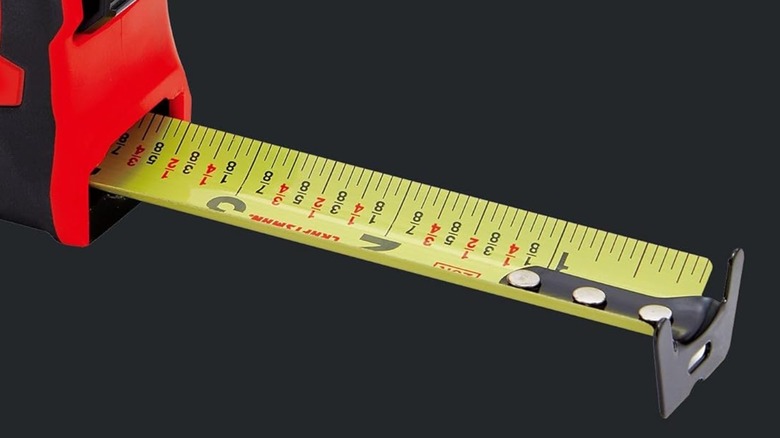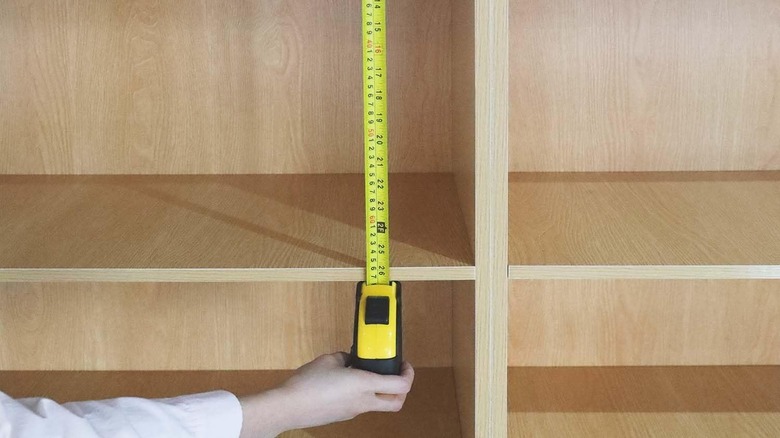Why Do Tape Measures Have Loose Ends? Here's What They're For
We may receive a commission on purchases made from links.
While there are a growing number of measuring apps on your phone, the technology is still evolving, and they are not always ideal for precise measurements. Whether you're a worker at a construction site or a homeowner who is looking to make sure your latest IKEA purchase is going to fit that odd corner in your house, there are few tools that are so universally useful as the tape measure. Since its creation in the United Kingdom almost 200 years ago, tape measures have become essential for measuring things for personal, professional, and even legal use (as long as they've been certified by the right bodies).
Although their class can indicate their differences in accuracy, many commercially available measuring tapes from top manufacturers are considered accurate enough for the average person. That said, there are still things that you can do to lessen the margin of error. These days, measuring tapes have hidden functions that you may be taking for granted, such as the loose end. A loose end isn't a manufacturing issue, but it's actually an important feature for reading measuring tapes accurately.
Designed to accurately measure all kinds of surfaces, US Tape shares that a measuring tape's loose end can be adjusted to reach what is called "true zero." While it's not necessarily common knowledge, the metal tab itself measures 1/16", which can affect your measuring calculations. But how does it actually work, and how can you use it to your advantage?
How do you use the loose ends in measuring tapes?
Because it needs to balance accuracy and practicality, the metal tip that is used to "hook" at the surface can introduce some added benefits (or complications) depending on whether you know how to use it. For a practical example, imagine going to a furniture store with a plan to furnish your home office. To find the right desk, you need to check if it can fit the available space. To do this, you will want to extend the metal tip to create the necessary gap, hook it on one side, and read the measurement from the opposite end.
On the other hand, the opposite is true if you are planning to measure the interior section, such as in the inside of cabinets, drawers, or shelving units. Let's say you want to check if an organizer can fit into your work pedestal or if a particular shelf is tall enough or wide enough for the large books in your collection. For this to work, you'll need to shift the metal tip backward instead, which will include the width of the tip in the measurement.
Apart from learning how to use this metal tip to get "true zero," we also have a ton of other tips for using measuring tapes. Supplementing it with the right pencil and actions like tilting the blade and not bending can help give more precise measurements and improve the overall lifespan of your tool.

